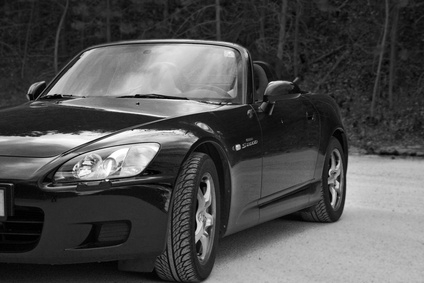
Engine ignition timing determines when the spark plugs fire. The timing can be too far advanced or retarded. Setting the correct timing provides optimum performance, along with peak fuel economy. If the timing is set incorrectly, the engine can sputter at low or high speeds, idle roughly or stop altogether when the accelerator pedal is applied suddenly. Timing set too far advanced can also cause engine overheating, even when the cooling system works fine. A Honda owner can set his vehicle's engine timing with a few steps and simple tools.
Drive the car, warming it up to operating temperature, then place the vehicle in park (or neutral) and set the emergency brake. Turn off all accessory devices inside the car. Instruct an assistant to sit behind the wheel. Raise the hood.
Stand towards the front of the distributor and locate the three 12 mm bolts on the distributor mounting bracket. Two bolts sit at the bottom; the other sits on top of the bracket. Loosen them until the distributor moves but only enough to move it by hand. Connect a timing light to the number 1 cylinder plug wire and the leads on the timing light to the battery.

Tell your assistant to start the car and run the engine speed up to 750 RPM and hold it there. Direct the timing light down at the harmonic balancer (crankshaft pulley). Aim the light through the gap between the driver's side engine mount and the power steering canister. Squeeze the gun trigger on the timing light and watch where the flashing strobe light lands.
Locate the small, arrow-like pointer on the engine block. The harmonic balancer has a small array of colored marks on it. The marks represent different spark advances. The upper white mark indicates 0BTDC (zero degrees before top dead center). The center mark indicates 16 degrees BTDC. The mark closest to the front of the car will be 18 degrees BTDC, and the last mark should show 14 degrees BTDC. Rotate the distributor until the pointer falls directly over the correct timing mark that your vehicle's repair manual indicates. If it calls for 14 degrees before BTDC, align that mark with the pointer. Tighten the distributor bolts. Recheck the timing to make sure the distributor has not rotated while you tightened it.

Disconnect the timing light from the battery and the plug wire. Test-drive the vehicle to check its performance. Shut the engine off and restart it several times, making sure it cranks fast and evenly.